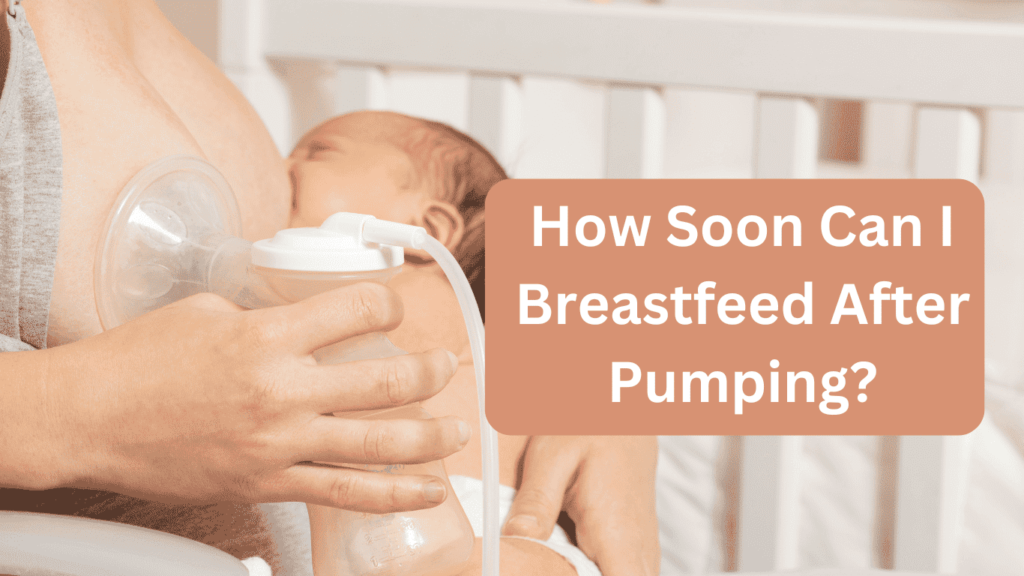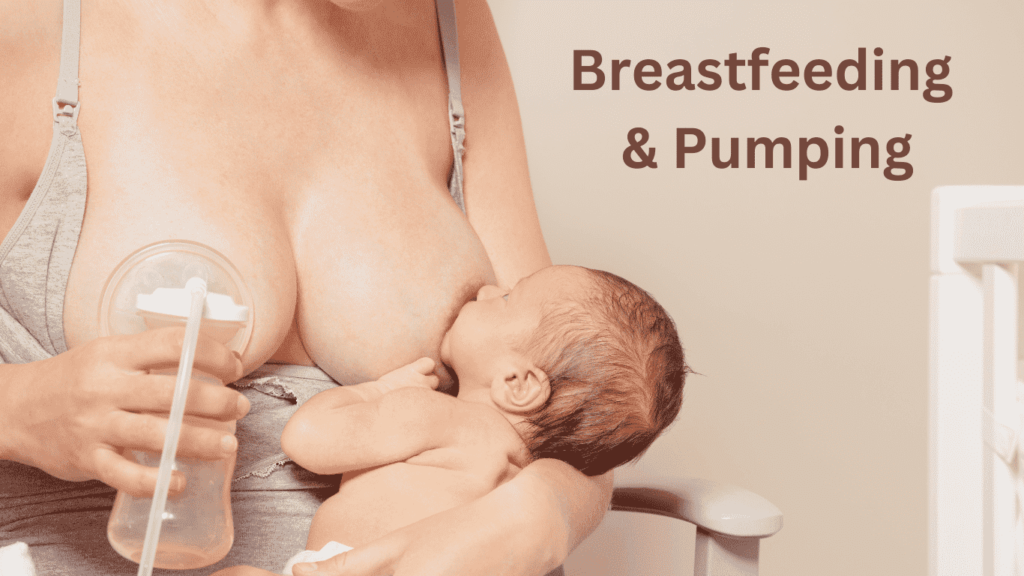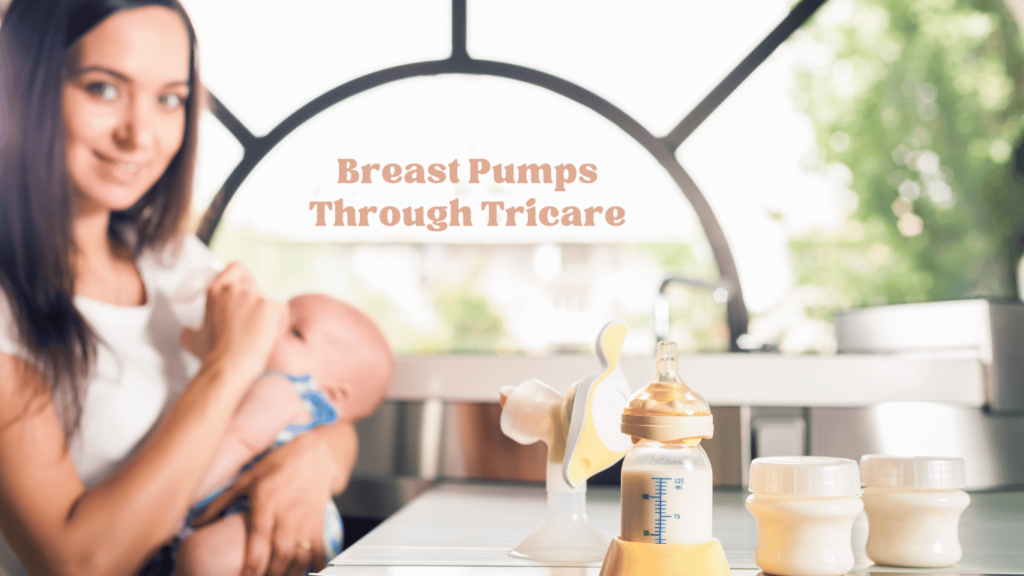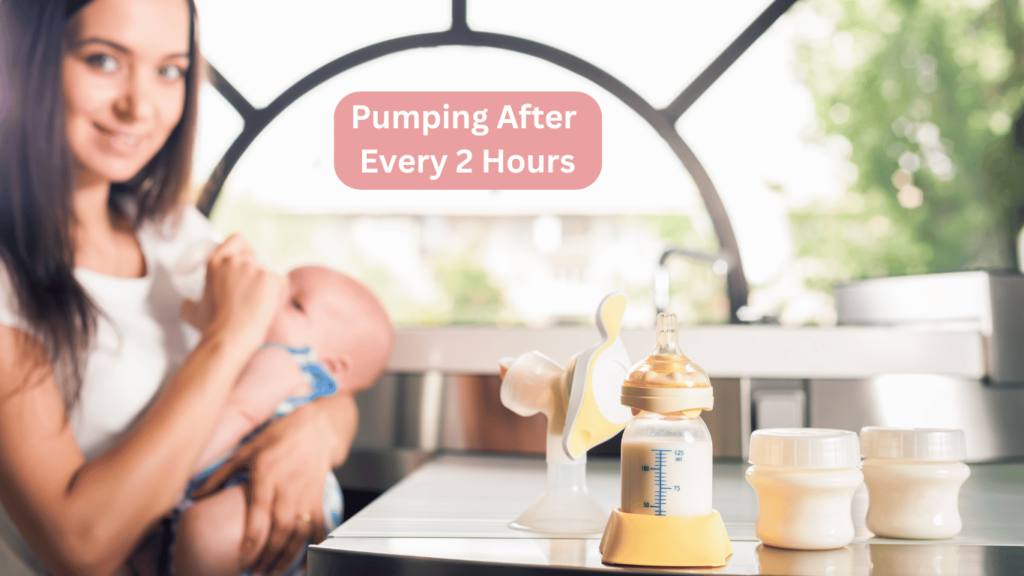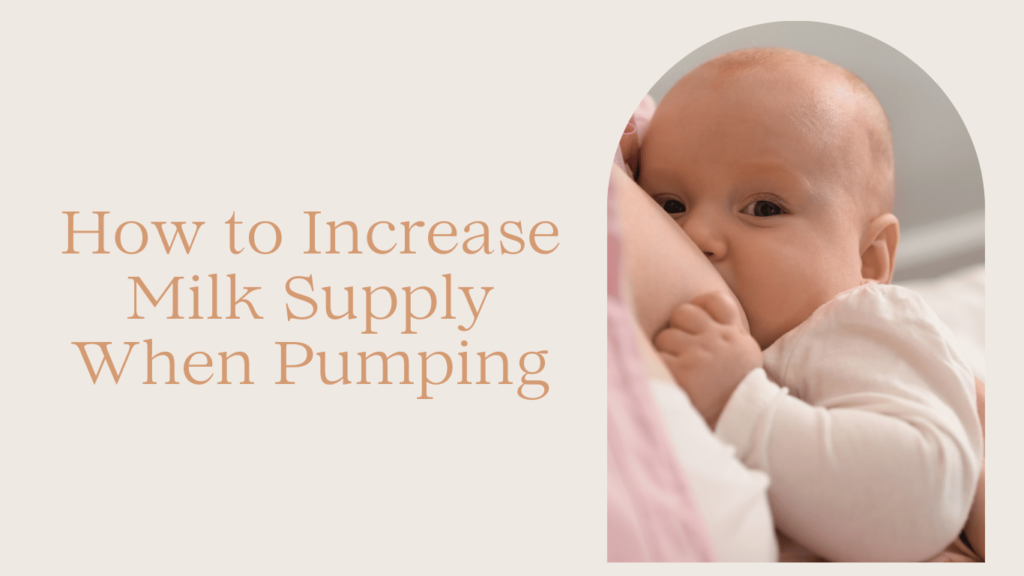How Soon Can I Breastfeed After Pumping?
As a mom who’s been there, I’ll guide you through balancing pumping and nursing with practical advice based on both research and personal experience. Key Takeaways Baby’s Hunger Comes First: If your little one shows hunger cues after pumping, go ahead and nurse immediately—your body always keeps some milk in reserve. 30-60 Minute Wait Is Ideal: When possible, waiting 30-60 minutes after pumping allows your breasts to refill more completely for a satisfying nursing session. Every Mom Is Different: Your unique milk production, pumping efficiency, and baby’s age all affect how quickly you can breastfeed after pumping. Trust Your Body: Learning to read your body’s signals and your baby’s cues will help you create a rhythm that works for your breastfeeding journey. Prioritizing Your Baby’s Needs: Always First I’ve learned through both of my breastfeeding journeys that a hungry baby doesn’t care about pumping schedules! When your little one is showing hunger cues, whether you pumped 5 minutes or 50 minutes ago, it’s perfectly okay to offer the breast. Here’s why: Your Breasts Are Never Truly “Empty” Unlike bottles that can run dry, your breasts continuously produce milk. Even after a thorough pumping session, I’ve found that my babies could still get enough milk to satisfy them. Your body is amazing that way—milk production happens 24/7, with new milk being made even as your baby nurses. Nursing Is More Than Just Nutrition When my babies nursed after I’d pumped, I noticed they weren’t just there for the milk. The skin-to-skin contact, comfort, and security they felt while nursing met emotional needs that pumping simply can’t address. This connection is especially important if pumping has meant some separation. Mom-to-Mom Tip I always keep a glass of water and a small snack nearby when nursing after pumping. This helps support my energy and hydration when my body is working overtime to make more milk! Factors Affecting Your Post-Pumping Breastfeeding Timeline While asking “how long after pumping can I breastfeed?” is common, the answer varies for every mom. Through reviewing countless breast pumps and talking with hundreds of nursing mothers, I’ve identified these key factors that affect your optimal waiting time: How Efficient Was Your Pumping Session? Not all pumping sessions are created equal! If I’ve done a thorough 20-minute session with my hospital-grade pump, my breasts need more time to replenish compared to a quick 5-minute pumping with a manual pump. High-efficiency pumps can remove more milk, potentially requiring a longer wait before nursing. Your Personal Milk Production Rate Every mom’s body replenishes milk at different rates. I’ve noticed my milk seems to return faster in the morning than in the evening. Some moms find their breasts refill within 30 minutes, while others might take 1-2 hours to feel full again. Research suggests milk production is continuous, with breasts refilling at approximately 20ml per hour, though this varies widely. Your Baby’s Age and Nursing Efficiency My newborn took longer to nurse and needed more frequent feedings compared to my 6-month-old. Older babies often nurse more efficiently, extracting milk that even the best pumps might leave behind. This means they might be satisfied even when nursing shortly after you’ve pumped. Your Overall Supply Moms with abundant milk supplies might find their babies can nurse effectively even minutes after pumping. If you’re working to increase supply, waiting 1-2 hours between pumping and nursing could help maximize stimulation and overall production. Practical Solutions: Can I Breastfeed Immediately After Pumping? The short answer is yes—you absolutely can breastfeed immediately after pumping if your baby is hungry! After trying various approaches with both my children, here are practical strategies I’ve found work well: For When Your Baby Is Hungry Right After Pumping Try Both Sides: Even if one breast feels empty after pumping, offer both sides when nursing. I’ve often been surprised how my seemingly “empty” breast still provided enough for my baby. Breast Compression: Gently compress your breast while baby nurses to help them get more milk with less effort. This technique saved me many times when nursing after pumping! Supplement if Needed: If you’re concerned about milk volume, have the freshly pumped milk ready in a bottle. You can offer the breast first, then supplement with the bottle if your baby still seems hungry. Creating a Pumping and Nursing Schedule That Works Finding your rhythm takes time. Here’s what worked for me: Pump After Morning Feeds: I found pumping about 30 minutes after morning nursing sessions yielded the most milk without affecting my baby’s next feeding. Time Pumping Between Feedings: When possible, I aimed to pump midway between nursing sessions—about 1.5 hours after nursing and 1.5 hours before the next anticipated feeding. Watch the Clock and Your Baby: If I needed to pump less than an hour before an expected feeding, I’d do a shorter pumping session (5-7 minutes) to leave milk for my baby. How Long Does It Take For Milk To Replenish After Pumping? From my experience testing various pumps and speaking with lactation consultants, most moms find their milk noticeably replenishes within 30-60 minutes, with more complete refilling in 1-2 hours. This is why many exclusive pumpers follow a schedule of pumping every 2-3 hours. Special Circumstances: When Timing Matters More Some situations require more careful planning of your pumping and nursing schedule: Building a Freezer Stash When I was building my freezer stash for returning to work, I found pumping first thing in the morning (after nursing but before my baby fully emptied my breasts) helped me collect extra milk without disrupting my regular feeding schedule. Exclusive Pumping with Occasional Nursing If you primarily pump but sometimes nurse, try to nurse when your breasts feel fullest for the most satisfying experience for your baby. I found that scheduling a nursing session about 2-3 hours after pumping worked well during this transition. Managing Oversupply For moms with oversupply, pumping immediately before nursing can actually help. A quick 5-minute pumping session can remove the forceful initial letdown, making nursing more comfortable for
How Soon Can I Breastfeed After Pumping? Read More »

